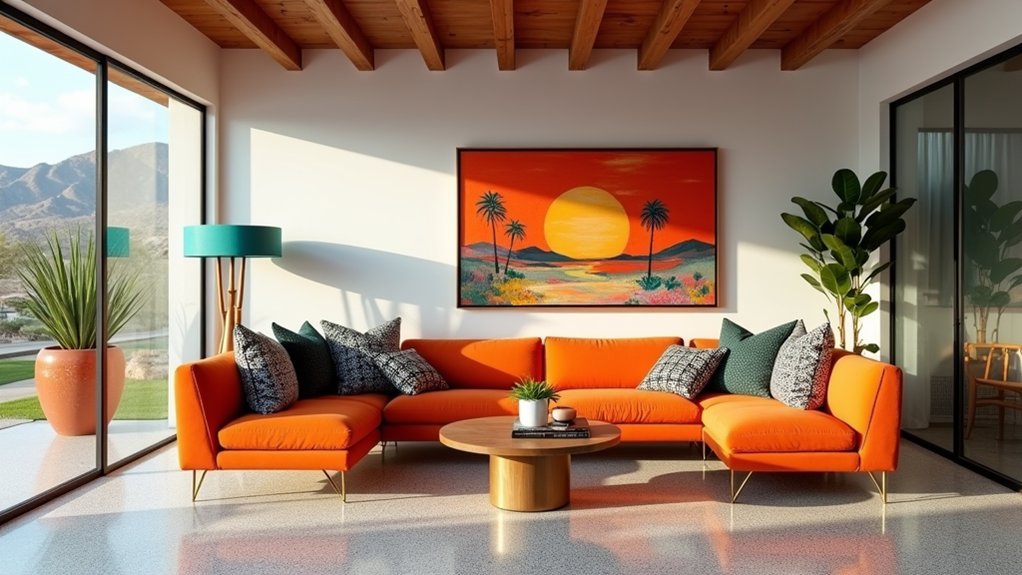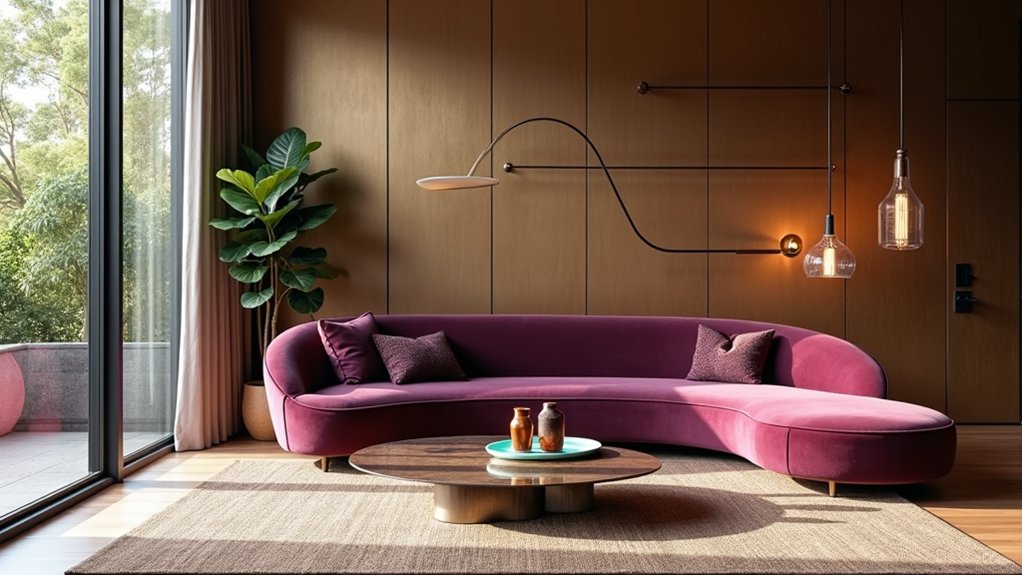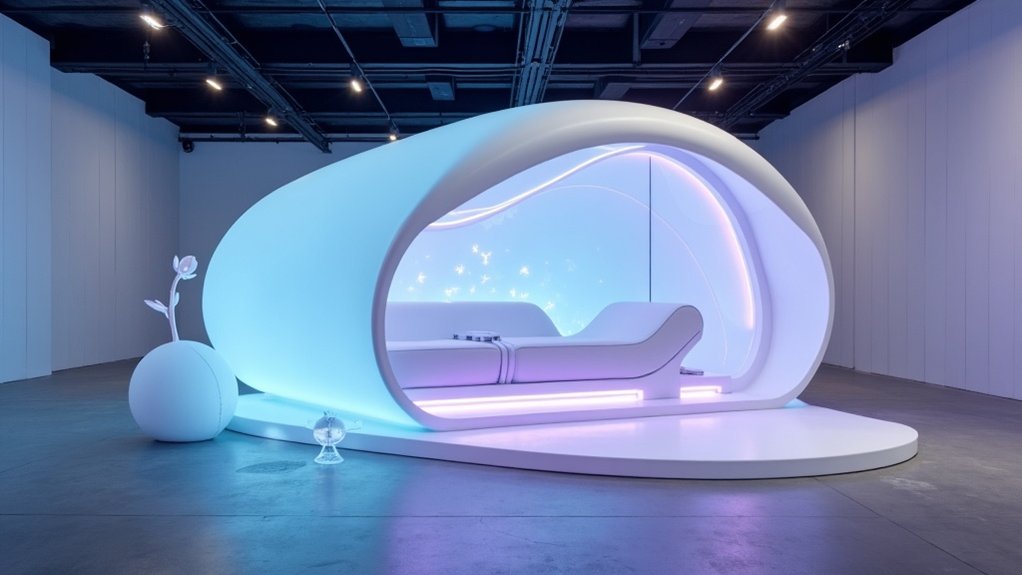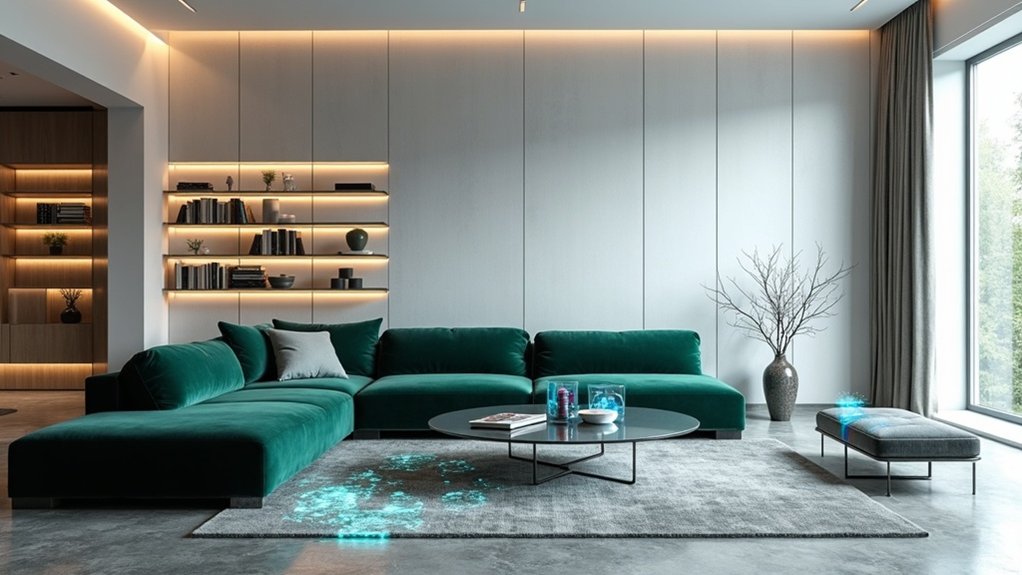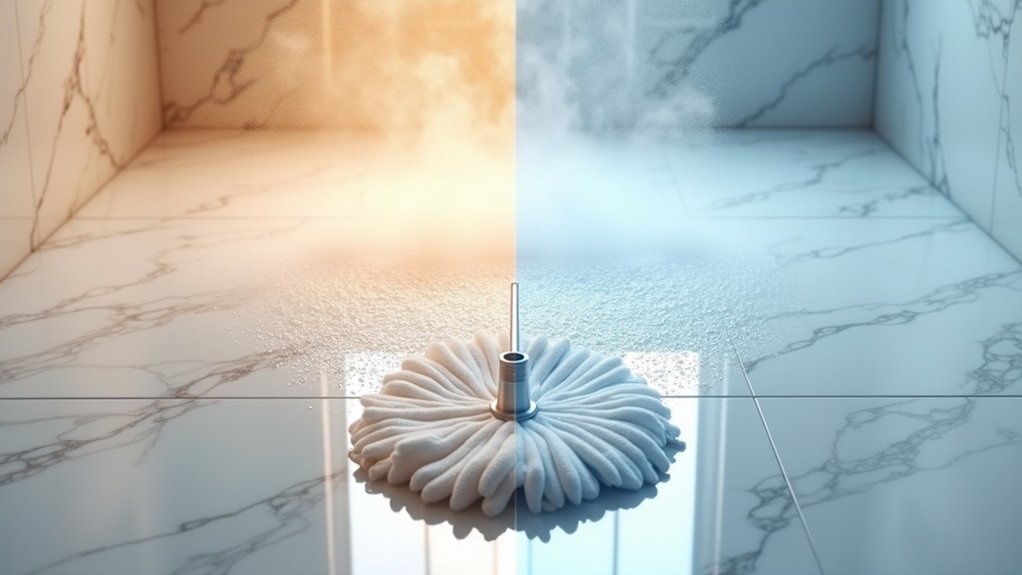Three distinct design movements converged in Palm Springs during the mid-twentieth century, creating a bold aesthetic that continues to inspire contemporary interiors worldwide. Desert Modernism‘s clean lines, post-war optimism’s vibrant colors, and California’s indoor-outdoor lifestyle philosophy merged to form a unique architectural language that remains influential today.
The signature element of Palm Springs design lies in its fearless use of color against minimalist backdrops. Bright turquoise, orange, and pink doors punctuate stark white facades, creating focal points that reflect the era’s exuberant spirit. These bold choices extend beyond entryways into interior spaces, where strategic pops of color animate otherwise neutral rooms. The key lies in restraint—one vibrant accent wall or statement furniture piece prevents sensory overload while maintaining visual impact.
Bold color against minimalist backdrops creates the signature Palm Springs aesthetic—where restraint transforms vibrant accents into powerful design statements.
Architectural innovation defines these desert homes through distinctive rooflines and material experimentation. Butterfly-wing roofs soar against azure skies, while flat-topped structures emphasize horizontal planes that echo the surrounding terrain. Glass walls dissolve boundaries between interior living spaces and outdoor entertaining areas, transforming patios into natural extensions of formal rooms. This seamless flow represents more than aesthetic choice; it embodies a lifestyle philosophy that maximizes desert living. The strategic placement of breeze blocks throughout these structures provided natural cooling while adding decorative geometric patterns that became synonymous with Desert Modernism.
Material selection plays a vital role in achieving the Palm Springs aesthetic. Concrete, steel, and expansive glass panels—revolutionary materials during the mid-century period—combine with natural elements like light coastal oak and textured tiles. These contrasts create sophisticated tension, balancing industrial coolness with organic warmth. The influence of Bauhaus principles rejected excessive ornamentation in favor of pure, functional design that emphasized the beauty of unadorned materials.
Contemporary interpretations preserve these material relationships while incorporating modern technologies and sustainable practices.
Pattern integration requires careful orchestration to avoid visual chaos. Geometric motifs echo architectural elements, creating interconnected design narratives throughout spaces. Scale variation adds depth—large-scale patterns on accent pillows contrast with subtle textures on upholstery, while geometric tiles reference the home’s angular forms.
Modern Palm Springs design successfully preserves original architectural integrity while embracing contemporary updates. Custom decorative elements incorporate desert-inspired palettes that connect interiors with the surrounding terrain.
This thoughtful balance between preservation and innovation guarantees these homes remain relevant, proving that bold design choices, when executed with precision, create timeless environments that transcend specific eras.
